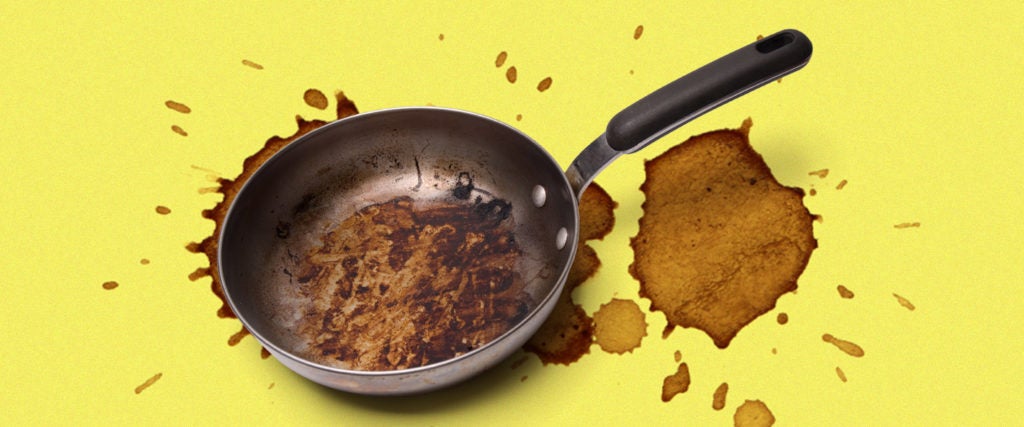Whoever invented stainless steel (don’t care to Google it) probably sold their soul to the devil, right along with whoever made the dishwasher. Both are very stupid inventions that just create their own work. I’ve never owned either a dishwasher or a stainless steel pan, but every time I go to the home of someone who does, they’re like, “Oh, I have to thoroughly wash all of my dishes by hand before they go in the dishwasher,” or, “This pan can only be used to boil water, and then must immediately be given its own spa day in order to clean it.”
Bitch? What’s the point?
I’ve lamented the dishwasher before. Now, I devote my angst toward stainless steel. Hypothetically, it won’t “rust” or stain. Literally, um, yes it does. You’re not even supposed to use regular cleaning products on stainless steel refrigerators or stoves — instead, you have to buy some special-ass stainless steel cleaner. Does this not just entirely defeat the purpose? It’s not really “stainless” if it needs to be treated with some specific product. I don’t call my white T-shirts “stainless” just because bleach exists.
Anyway… according to HowStuffWorks, “stainless steel” should really be thought of as “stain less steel.” As in, it will stain less than its counterparts. Stainless steel holds its stain-averting qualities in a protective coating. The problem, though, is that protective coatings wear down fast. Household stainless steel products are further weakened by the fact that most are actually stainless-steel plated, rather than entirely stainless steel. This makes many stainless steel products further susceptible to damage.
- Read Next: Yes, You Have to Refrigerate Your Hot Sauce
The real issue with that is, you’re supposed to fucking cook with your stainless steel. It’s not there to just look pretty. But scraping it with metal utensils or scouring it with steel wool are essentially off the table. In fairness, you can generally still clean stainless steel pans with soap and water. For particularly tough stains, you can soak the pan in warm water and baking soda. Similarly, discoloration in the pan can often be removed by soaking it in vinegar and water, and you can just grease up the pan with olive oil if you want it to look shiny. Better yet, when buying a stainless-steel pan, look for higher levels of chromium and nickel, the metals that help protect stainless steel from corrosion and tarnishing. (To stainless steel’s credit, too, it’s likely a healthier pan choice than something like Teflon.)
I guess the real problems with stainless steel then are that we decided we needed appliances to be made out of it, which is totally pointless and a waste of time, and also that there’s a ton of low-quality stainless steel pans on the market. Show me a decent quality stainless steel pan, and maybe I’ll change my tune. For now, I’m fine with my pans staining.

